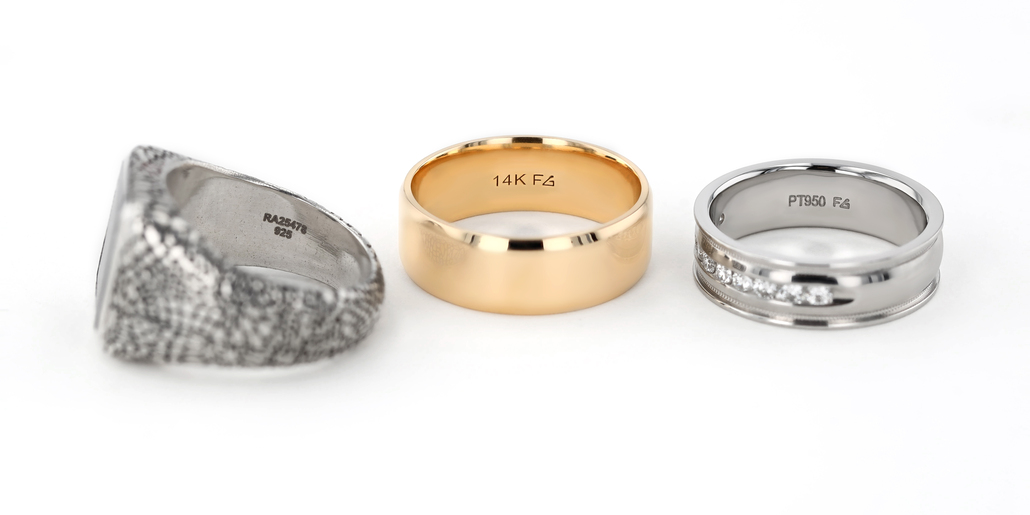- Metal stamps offer a clear clue as to whether your jewelry is real gold, silver or platinum.
- Check for a real diamond by observing how it handles heat, whether it scratches glass and if it reveals any natural inclusions.
- If uncertain about the origin or value of your jewelry, consult a professional jeweler like Borsheims to confirm the piece’s legitimacy.
When purchasing or inheriting jewelry, it’s essential to determine whether the piece is genuine. Authentic jewelry not only carries greater value but also holds the stories, memories and meaning that make it irreplaceable. Here are some effective actions to help you identify real jewelry.
How to Tell if Your Jewelry Is Real Gold, Silver or Platinum
One of the easiest clues to real metal jewelry is the jewelry metal stamp. Most authentic fine jewelry features a hallmark or metal stamp, a small inscription that denotes the type and purity of the metal used. Be sure to inspect these markings with a magnifying glass, as they may be small and located on a less conspicuous area, such as the clasp or inner band. Here’s what to look for:
- Gold: Common stamps include 10K, 14K, 18K or 24K, which indicate the karat purity of the gold. European pieces may use numbers like 585 (14K), 750 (18K) or 999 (24K).
- Silver: Look for 925, Sterling or Ster—all signs of sterling silver, which is 92.5% pure silver.
- Platinum: Stamps such as PT, PLAT or numbers like 950 suggest the piece is made of platinum.
If there’s no stamp, that doesn’t automatically mean it’s fake—but it warrants a closer look, especially if the item appears mass-produced.
Test the metal with a magnet. Precious metals like gold, silver and platinum are not magnetic. If your piece is strongly attracted to a magnet, it might be made from a less valuable metal, or it could be gold-plated rather than solid gold. However, magnetic tests aren’t foolproof—some base metals are also non-magnetic—so use this method in conjunction with others.
How to Tell if Your Jewelry is Real Diamond
Authentic gemstones usually have specific characteristics that distinguish them from fakes. For instance, real diamonds will not fog up when you breathe on them due to their ability to disperse heat immediately. If the fog lingers for a few seconds, the stone may be a simulant, like cubic zirconia. While this test isn’t definitive, it can provide a quick clue. You can also perform a scratch test, as genuine diamonds can cut through glass.
For colored gemstones like sapphires or emeralds, irregularities such as natural inclusions are a sign of their authenticity, while man-made stones often appear flawless.
The craftsmanship can reveal the integrity of a jewelry piece. Genuine jewelry is well-crafted with fine attention to detail. Look for smooth edges, secure settings and quality finishes. If the piece feels flimsy or contains obvious flaws, it may not be real. Additionally, weigh the item in your hand—authentic metals and gemstones often feel denser and heavier compared to counterfeit counterparts.
When in doubt, the most reliable way to authenticate your jewelry is to bring it to a professional. Borsheims offers expert appraisal services on all jewelry purchased from Borsheims. See all services here.
By verifying key details about your jewelry, you can gain confidence in its true nature. The assurance of authenticity not only brings peace of mind but also enriches the experience of ownership.

